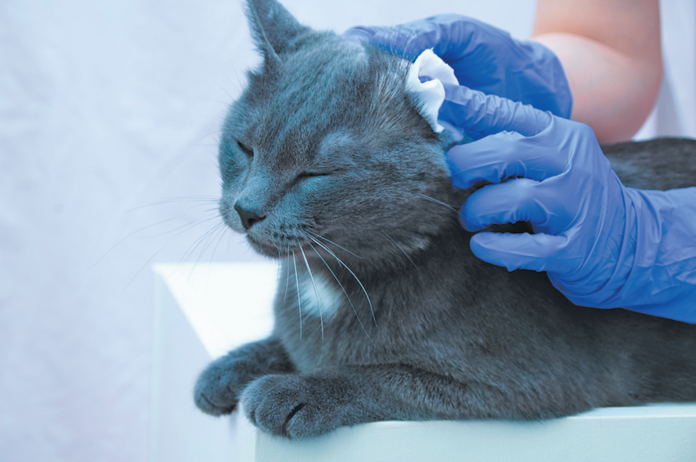Your cat likes to keep clean and well groomed, but there are a couple of areas she may need help with. The ears are among them. Pay attention to your pet’s ears for discharge, pain, or itchiness that leads to undue scratching.
Ear cleaning
Many cats will never need their ears cleaned. Things just take care of themselves. Other cats are more prone to “gunk” and could use some assistance so that their ears remain healthy and they can hear as well as possible. (Cats’ natural range of hearing goes not only above ours but also above that of dogs, and they can hear sounds four to five times farther away than people can.)
Gently pull back the ear flap and dribble a small amount of cleaning solution into the ear canal opening. That’s all it will take to fill the canal. Some of the cleaners that Tufts veterinary dermatologist Dr. Ramon Almela recommends are Epi-otic, Otoclean, Malacetic Ear Cleaner, Oti-clens, and Douxo. (Cleaners with hydrogen peroxide or alcohol can cause undue irritation.)
Massage the base of your cat’s ear (on the outside) for 5 to 10 seconds. That will prompt her to shake out the solution. The wax and other debris will loosen in the process.
Wrap some gauze around your finger to clean the ear of excess fluid and dirt. Stick to where your fingers can reach gently, Dr. Almela advises. If you don’t get every last bit of wax, that’s okay. It’ll come out in the next cleaning.
Wax build-up or a bad odor in your cat’s ear are not the only things that should prompt a veterinary visit. The ASPCA lists a number of other ear-related signs that indicate a trip to the doctor is in order.
➤ Persistent scratching and pawing of the ear area
➤ Sensitivity to touch
➤ Head tilting or shaking
➤ Loss of balance/disorientation
➤ Redness or swelling of the ear flap or canal. This could indicate otitis externa, inflammation of the outer ear canal that can prove very painful. Otitis externa is one of the most common reasons cats are taken to the doctor. By one estimate, the incidence of otitis externa has increased 34 percent since 2006. The condition is often accompanied by an ear infection because it makes the ear canal a good breeding ground for bacteria or yeast.




